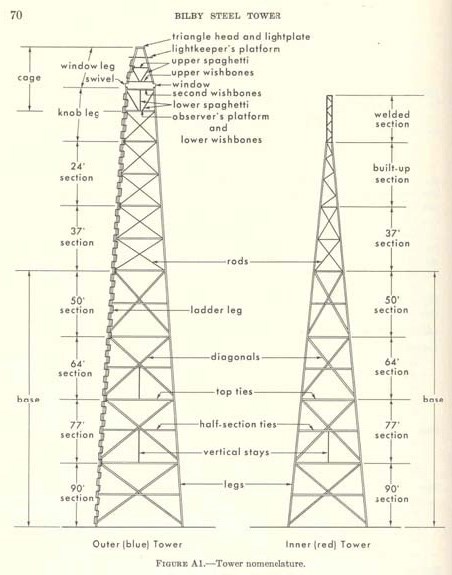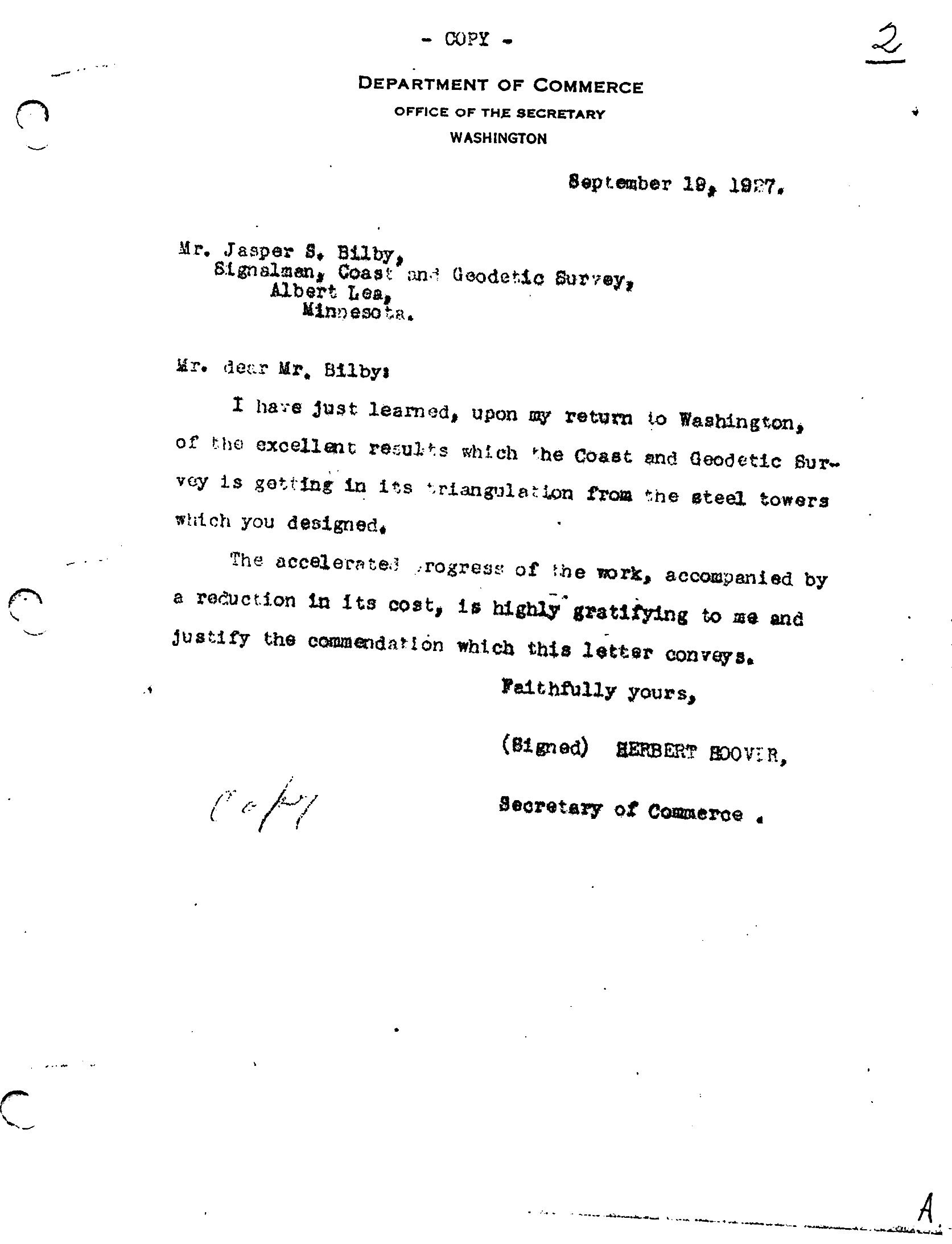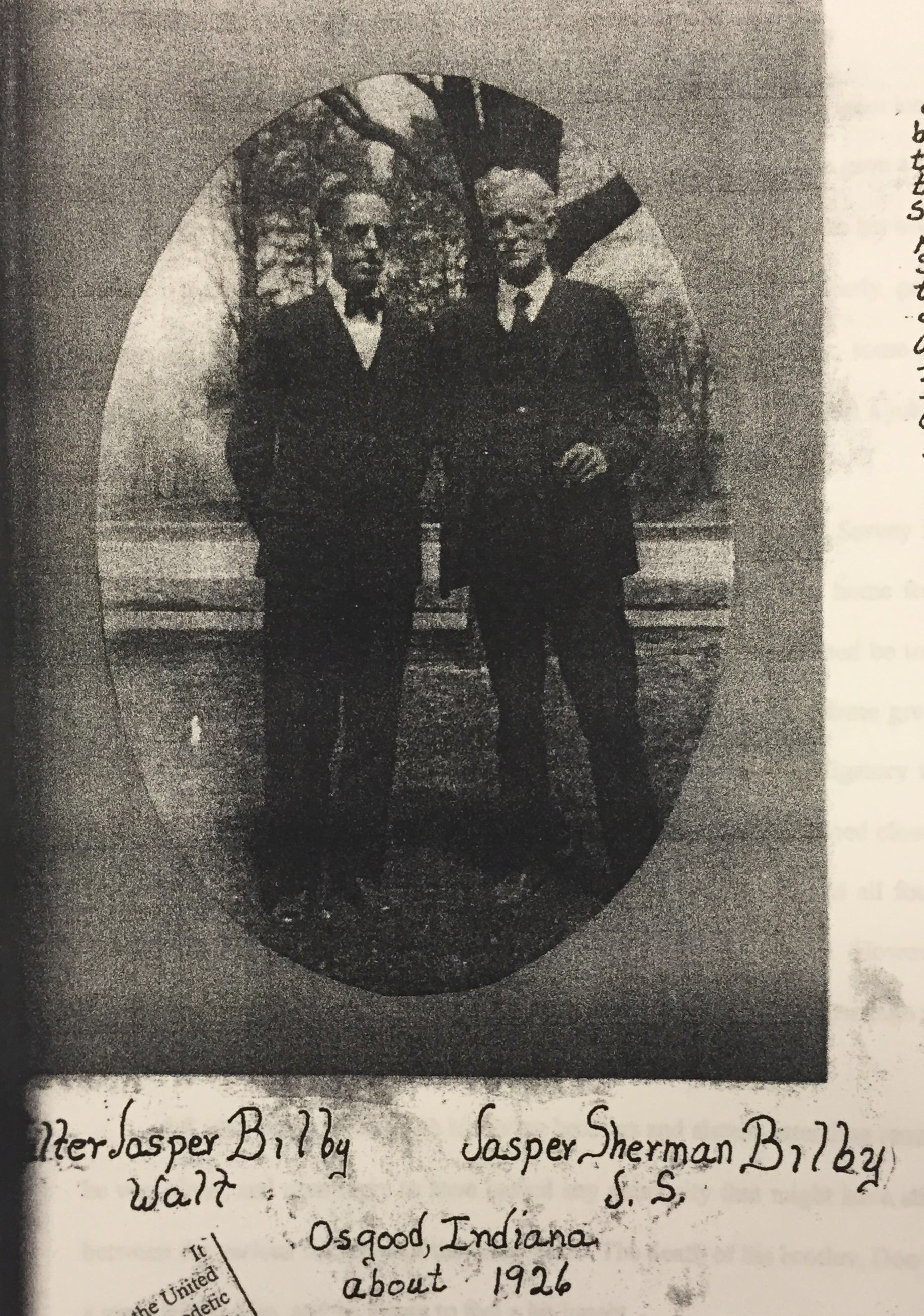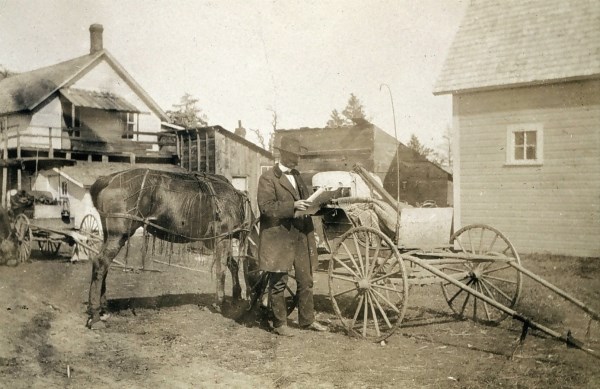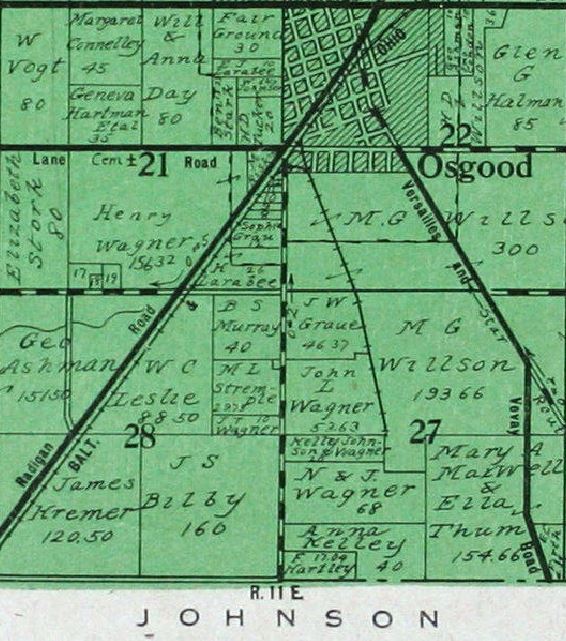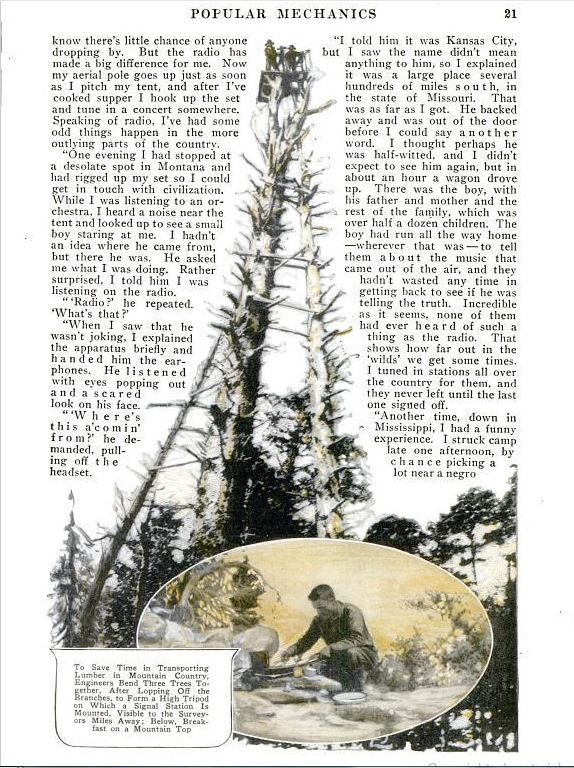
During the late nineteenth and early twentieth centuries, expeditions from multiple nations took on one of the most dangerous, treacherous parts of the globe: the north and south poles. The most well-known example is Irish explorer Sir Ernest Shackleton. His expedition to Antarctica in 1915 became world-famous for his actions to save all 22 men of his crew from extreme cold for 105 days. Biographies of this journey became best-sellers, inspiring many on-screen adaptations, most notably 2002’s Shackleton, starring Kenneth Branagh. However, Shackleton wasn’t the only artic explorer to receive accolades for his endurance and bravery. Julius Frederick, Indiana resident and survivor of the Lady Franklin Bay expedition, also endured harsh temperatures, food shortages, and crew disruptions while stranded in the arctic.

According to the Indianapolis News, Frederick was born in Dayton, Ohio on July 21, 1852. He spent most of his early years in St. Mary’s, Ohio before his mother died when he was thirteen. Without much keeping him in Ohio, Frederick moved to Chicago, taking odd jobs as a messenger boy and railroad worker before he enlisted in the US army in 1876. For many years, Frederick was a soldier in military campaigns against Native Americans, fighting the Sioux and Nez Pierce. Specifically, he fought in the battle of Muddy Creek against the Sioux on May 7, 1877.

By 1879, Frederick was interested in a different course and signed up to join the Howgate expedition to the North Pole. However, the unstable condition of the ship stranded Frederick in Montana for another two years. Finally, in 1881, Frederick joined the Lady Franklin Bay expedition led by Adolphus Greely, a then-First Lieutenant of the Army’s 5th Cavalry Regiment. Lady Franklin Bay is by Ellesmere Island, Nanavut, Canada, making it one of the most northern spots on the globe to be explored. The expedition’s task, in Frederick’s words, was to “take scientific observations within the Arctic Circle.” This came in the form of weather recording devices and other techniques used to understand the intense climate of the arctic region. In August of 1881, the 21 person crew set course on the ship Proteus, a “steam whaler” that carried them from St. John’s, Newfoundland to Lady Franklin Bay. As historian Glenn Stein noted, Frederick’s “nickname among his Arctic comrades was “Shorty” because of his five-foot, two-inch stature” and he “did little hunting during the LFBE, but performed the various duties of a cook, steam-launch engineer, and shoemaker.”

Once they arrived at Lady Franklin Bay, Greely and his team began their months-long investigation of the region, complete with recordings of the climate and natives. This was all in accordance with a multinational project called the International Polar Year that, according to historian C. J. Taylor, sought to establish “14 research stations” to “study the geophysics and geodesy of the polar region.” Among these stations, they resided at Fort Conger, an outpost a few miles inland from the bay. During these investigations, Sergeants David Brainard and James Lockwood confirmed the “farthest north” record up to that time. Things were going well until the supply ship Neptune failed to reach Lady Franklin Bay and returned to the United States. With its failure went the expedition’s resupply of food and other necessities. Subsequently, the expedition went from a mission of knowledge to one of survival.


Greely and his men began to face intense supply shortages which ravaged the crew, leading many to die from the lack of food and the harsh temperatures. A first rescue attempt in 1883 had failed, when the ship Proteus had been sunk by ice collisions, permanently shifting the crew southward from Fort Conger. It was in this dire situation that Julius Frederick endured his most painful experience of the expedition. In April of 1884, only a few months before the party was rescued, Frederick and Sergeant George W. Rice trekked to Cape Isabella, Baird Inlet, “to attempt the recovery of the hundred pounds of English beef which had been abandoned in November, 1883.” As a profile in Scribner’s magazine wrote, Frederick and Rice risked “their lives at almost every step of the way . . . only to find, after hours of searching among the floes, that their triumph was a barren one. . . .” The meat “had drifted from the shore” and was not salvageable. Rice’s condition worsened dramatically and he asked Frederick to leave him to die. Frederick refused and stayed with Rice until the very end, wrapping Rice’s “frozen feet with the temiak, or fur-lined jacket taken from his [Frederick’s] own back for this purpose, and then sat and held his unfortunate comrade till the latter’s pain was relieved by death.” Frederick initially yearned to die but, dedicated to his mission, saved Rice’s food ration, laid Rice’s body to rest, gathered up their supplies, and returned to camp so his colleagues wouldn’t suffer during a search attempt. As Scribner’s wrote, “He would use what was his own, but would not rob the living or the dead.”


While many died from malnutrition, immense cold, and sheer exhaustion during the Greely expedition, only one was executed for insubordination. Private Charles B. Henry was caught stealing food in excess of his ration and summarily punished for his crimes. As the Fort Wayne Sunday Gazette noted, Frederick recalled that Private Henry was shot in the back with “two balls taking effect and producing instant death.” The Gazette shared more details from Frederick about the grisly conditions:
He said further there may have been cannibalism, but of this he has no personal knowledge. Henry had been warned several times about stealing food, but he repeated the offense and finally Greely issued the order for his execution.

Frederick’s account was also published in the New York Times. However, the Indianapolis News reported that survivor Maurice Connell claimed Henry had been falsely accused and that Greely had actually stolen food. “To these charges,” the News wrote, “Sergeant Frederichs [sic], of this city, gives an emphatic denial, claiming that he himself saw Henry commit the theft. . . .” Greely also defended his decision to the New York Times, exclaiming that “it was discovered that, with other articles [food], Henry had stolen and secreted the sealskin boots of the hunter of the expedition.” The execution of Private Henry was one of the more inhumane moments of the Greely expedition, an acknowledgement of the harsh environment encompassing the men.

On June 23, 1884, after three long and suffering years, the survivors of the Greely expedition were rescued by a slew of ships led by Commander Winfield Schley. When all was said and done, there were only six survivors: Frederick, Brainard, Biederbick, Connell, Long, and Greely himself. Frederick was promoted to Second Lieutenant for his service during the expedition. The rest had perished during the years-long process to resupply and then rescue the expedition party. Greely, as quoted in the Indianapolis Journal, lamented that “six out of twenty-five were brought home. Nineteen brave men remain in that land of desolation.” When the crew docked at Portsmouth, New Hampshire on August 4, 1884, the New York Times wrote:
Never before in the history of Portsmouth has there been so grand and imposing an event as the celebration of the return of Lieut. Greely and the survivors of the expedition. . . . They were enthusiastically greeted as they landed, and the crowd pressed forward to shake their hands.

The hero’s welcome they received from their fellow citizens underscored the almost unthinkable hardships these men faced while in the arctic.
After a few other postings, Frederick moved to Indianapolis in February 1885, on assignment for the federal Signal and Weather Bureau Services. His move back to the US required some adjustment, especially in regards to the climate. “Sergeant Frederick[s],” the Indianapolis Journal wrote on January 13, 1887, “was about, yesterday, in his shirtsleeves complaining that the weather was much too warm.” The article further quoted him:
“I suppose an Esquimau [sic],” said the Sergeant, “couldn’t be made to understand that heat, no matter how strong it might be, could under any circumstances, occasion suffering. A hereafter of unquenchable fire would have no terrors for him, and when missionaries are sent to the ever-frozen north, they will have to preach a future for the wicked of even more intense cold.”

Despite his acclimation to the cold, Frederick never fully recovered from his expedition. In an interview with the Indianapolis News, when asked of why he chose to live more inland in Indiana, he cited “rheumatism” as a motivator.

In 1902, after many years of lobbying by the state legislature, Julius Frederick received a final promotion, first-class Sergeant of the signal corps of the army, as well as a retirement with pension. Biederbick, Long, and Connell also received the same commendation. The measure was passed by the Congress and signed by President Theodore Roosevelt on June 12, 1902. This final tribute, explained by Indiana Congressman Jesse W. Overstreet in an article in the Indianapolis News, was to “give to these men the only recognition which it remains for a grateful nation to bestow upon those who have imperiled their lives in war or in pursuit of science. This expedition carried the American flag to the northernmost point it has ever been planted by any scientific expedition.” Frederick’s contributions to exploration were finally recognized by the United States and he could finally retire to focus on his health.
Unfortunately, by the fall of 1903, Frederick’s health steadily declined. As the Indianapolis Journal reported, Frederick was “lying in a critical condition at his home on Center Drive, Woodruff place. Acute gastritis, brought on by exposure while with the General A. W. Greely expedition to the North Pole nineteen years ago, is the cause of Sergeant Frederick’s illness.” Frederick died on January 6, 1904 from complications from stomach cancer. He was only 51 years old. Upon his death, the Monthly Weather Review applauded his work in meteorology and noted that he died “enjoying the respect and esteem of all who knew him.” His friend and fellow Greely expedition survivor, Henry Biederbick, traveled all the way from New Jersey to attend his funeral. Frederick was buried in Crown Hill Cemetery in Indianapolis.

Reflecting on the expedition, Frederick said to the Indianapolis News that:
The Greely expedition was most unfortunate. I am not going to criticise [sic]. It was a horrible experience. I think, however that the success of polar expeditions is largely a question of equipping well. My expedition for the most part had only the rigors of the climate to contend against.
Frederick’s humility and perseverance, in the face of unparalleled challenges, speaks to the importance of exploration. As astronomer Carl Sagan once wrote, “We have always been explorers. It is part of our nature. Since we first evolved a million years or so ago in Africa, we have wandered and explored our way across the planet.” Frederick was one of those explorers, a brave soul who dared to face the elements and survived. In his success the world grew more connected, more understood. Upon Frederick’s death, a friend recalled a motto that he had “made a precept throughout his life: ‘Nothing is impossible to him that does.” If that is the case, then Frederick thoroughly achieved the impossible.


















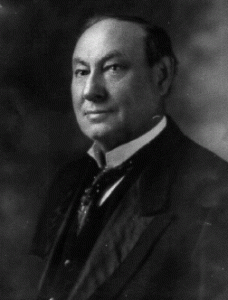
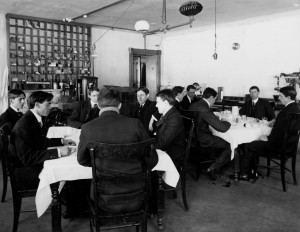


 Learn about the history of public health in Indiana and Wiley’s contributions with our publication
Learn about the history of public health in Indiana and Wiley’s contributions with our publication 
